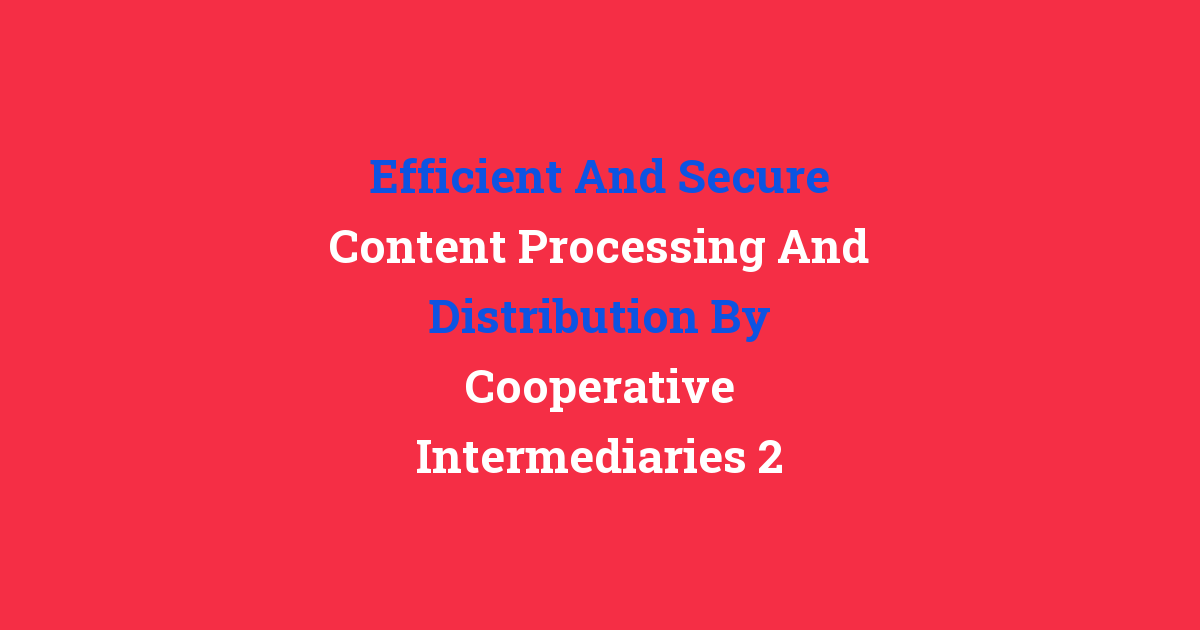Efficient and secure processing and distribution of content through intermediary cooperation.
Efficient and Secure Content Processing and Distribution by Cooperative Intermediaries
Introduction
In today’s digital age, the need for efficient and secure content processing and distribution has become more critical than ever. With the vast amount of data being generated and shared online, it is imperative that mechanisms are put in place to ensure that content is processed and distributed in a timely and secure manner. This is where cooperative intermediaries come into play, acting as a bridge between content providers and consumers to facilitate seamless content delivery.
Problem Statement
The existing systems for content processing and distribution often face challenges in terms of efficiency and security. Content providers struggle to reach their target audience in a timely manner, while consumers are faced with the risk of security breaches and unauthorized access to content. This calls for a new approach that can address these challenges and provide a more efficient and secure means of content processing and distribution.
Existing System
The existing systems for content processing and distribution typically rely on centralized servers to store and distribute content. While this approach may be effective in some ways, it also comes with its limitations. Centralized servers are vulnerable to security threats and can become a single point of failure, leading to potential downtime and data loss. Additionally, the reliance on centralized servers can result in slower content delivery times, especially during peak usage periods.
Disadvantages
The disadvantages of the existing system include:
– Vulnerability to security threats
– Single point of failure
– Slow content delivery times
– Limited scalability
– Higher infrastructure costs
Proposed System
The proposed system for efficient and secure content processing and distribution by cooperative intermediaries aims to address the limitations of the existing system. By leveraging a decentralized network of cooperative intermediaries, content providers can distribute their content more efficiently and securely. These intermediaries act as nodes in the network, working together to process and deliver content to consumers in a distributed manner.
Advantages
The advantages of the proposed system include:
– Improved security through decentralized architecture
– Faster content delivery times
– Scalability to accommodate growing demands
– Reduced infrastructure costs
– Enhanced reliability and resilience to failures
Features
Some key features of the proposed system include:
– Decentralized network of cooperative intermediaries
– Secure content processing and distribution
– Efficient content delivery through distributed processing
– Scalability to handle increasing content volumes
– Redundancy to prevent single points of failure
Conclusion
In conclusion, the proposed system for efficient and secure content processing and distribution by cooperative intermediaries offers a promising solution to the challenges faced by the existing systems. By leveraging decentralized networks and cooperative intermediaries, content providers can ensure that their content is processed and distributed in a timely and secure manner. This not only benefits content providers but also enhances the overall experience for consumers. With further research and development, this system has the potential to revolutionize the way content is processed and distributed in the digital age.

